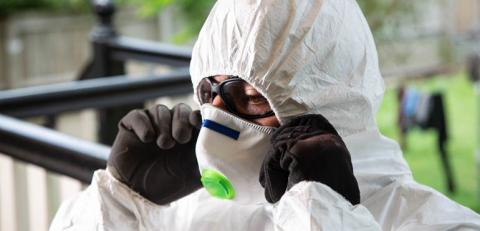
- Home
- Home owner hub
- Storms and natural disasters
- Prepare for natural disasters
Prepare for natural disasters
Natural disasters occur all across Queensland and can have lasting effects, long after the event has passed. We have tips and fact sheets to help you be prepared and limit the possible damage to your property in the event of a natural disaster.
Storm and cyclone season preparation
To prepare for storms and cyclones, we recommend you:
- trim trees, clear gutters and downpipes, clear your yard of rubbish
- conduct surface drainage and garden maintenance to prevent flooding or subsidence issues.
- work safely to secure loose roof tiles or sheets, or hire a qualified contractor to help you
- protect skylights with wire mesh, fit glass window and door openings with shutters, security screens, or the like
- prepare an emergency kit with emergency phone numbers, portable radio, torch, spare batteries, first aid kit, strong plastic bags for clothing and valuables, as well as plastic sheets, timber strips, hammers and nails for temporary repairs
- check boats are securely moored or protected on land.
Visit:
- Get Ready Queensland for more tips
Is your house prepared for a cyclone?
If a storm or cyclone is heading your way:
- listen to a local radio station
- shelter and secure animals
- put loose garden furniture and toys inside
- park vehicles under solid shelter or cover with firmly tied tarpaulins/blankets
- secure all external doors and windows and draw curtains
- keep an emergency kit handy
- disconnect all electrical items, external television/radio aerials and computer modems.
Bushfire season preparation
Get ready for bushfire season with the following tips:
- clear leaves, twigs, bark and other debris from the roof and gutters
- mow regularly
- trim low-lying branches 2 metres from the ground surrounding your home
- purchase and test the effectiveness of gutter plugs
- enclose open areas under decks and floors
- install fine steel wire mesh screens on all windows, doors, vents and weep holes
- point LPG cylinder relief valves away from the house
- conduct maintenance checks on pumps, generators and water systems
- seal all gaps in external roof and wall cladding
- display a prominent house or lot number if it is required in an emergency
- ensure adequate access to your property for fire trucks - 4 metres wide by 4 metres high, with a turnaround area
- relocate flammable items away from your home, including woodpiles, paper, boxes, crates, hanging baskets and garden furniture
- disconnect rainwater tanks from roof supply pipes, cover inlets and remove excess debris from around the tank
- if you have an on-site sewerage facility, mark the location of system components with a fire-resistant marker such as a rock, and turn off pumps and the power supply
- check the first aid kit is fully stocked
- prepare a Bushfire Survival Plan to decide if you will leave early or stay in the event of a bushfire.
If there is a bushfire in your area:
- monitor Fire Danger Ratings and tune in to warnings on the Rural Fire website
- be ready to enact your Bushfire Survival Plan and either leave early or be prepared appropriately if you stay at your property.
Planning to build in disaster-prone areas
If you are looking to build in an area that is affected by natural disasters, the Queensland Government has developed guides to help you build resilient homes in Queensland.
Frequently asked questions
Asbestos containing materials are dangerous when disturbed, like they may be during a disaster. Be aware that properties built before 1990 are likely to contain asbestos fibro sheeting.
If you think there may be asbestos in your home, call your local council or Workplace Health and Safety Queensland on 1300 362 128. More detailed information on asbestos safety can be found:
- in Asbestos Safety
- on the WorkSafe website.
You must contact the owner and request they remove it. If the tree is on local government property, inform the local government. Keep a record of what you have done.
You can use our Find a local contractor search. The search allows you to choose a category of building work and select a kilometre radius from a postcode. This will provide you with a list of local contractors who may help with repair work.
If a contractor has given you a quote, you should also ask for their QBCC licence number to check on our website that they are licensed for the work they are quoting on. A tradesperson must be licensed for any building work valued at over $3,300.
Yes. A contract is a legal requirement for all work valued over $3,300. It is also strongly recommended to enter into a contract for work valued at less than $3,300, but this is not a legal requirement.
You should also confirm your contractor holds the appropriate licence for the work.
Each insurance policy is different depending on various factors, such as the location of the insured property and the insurer.
The claimant needs to read the policy and make sure it covers all of their requirements. If you are unsure, contact your insurer to provide answers specific to the policy and you.
